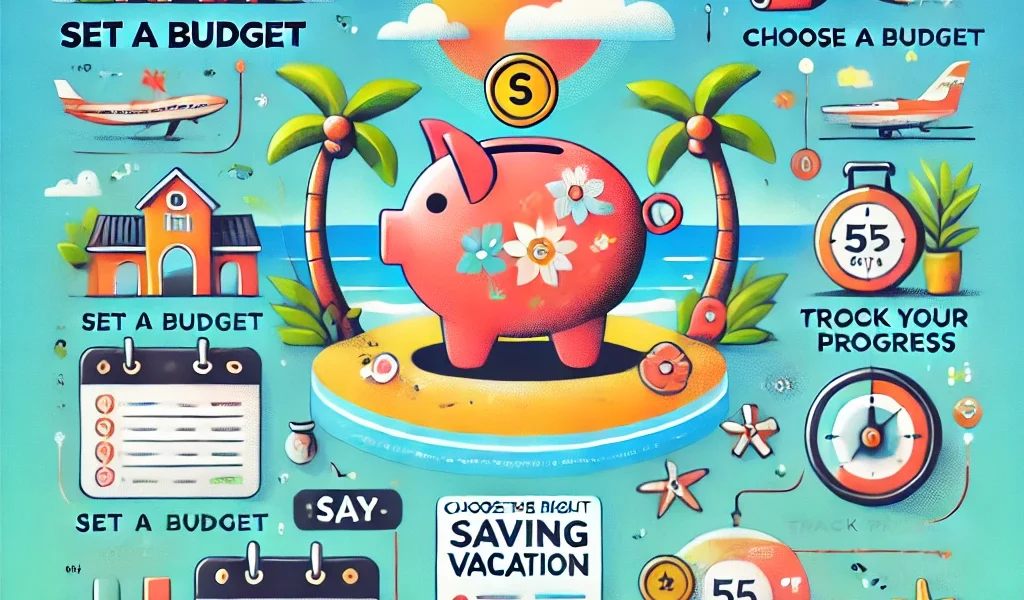Introduction
A dream vacation is more than just a getaway; it is an opportunity to relax, explore new places, and create unforgettable memories. However, funding such an experience can be a challenge. The key to making your dream vacation a reality lies in strategic financial planning. By leveraging saving plans effectively, you can accumulate the necessary funds without disrupting your financial stability.
Understanding Saving Plans for Vacation Goals
Saving plans come in various forms, each offering unique benefits based on your financial goals and timeframe. Here are some effective saving plans to consider:
1. Dedicated Vacation Savings Account
A vacation-specific savings account allows you to set aside money exclusively for travel. These accounts often offer competitive interest rates and prevent unnecessary spending.
Pros:
- Keeps travel funds separate from daily expenses.
- Encourages disciplined saving habits.
- Some banks offer interest on deposits, adding extra savings.
Cons:
- Limited withdrawal options in some cases.
2. Recurring Deposit (RD) Account
A recurring deposit account helps you save a fixed amount every month while earning interest. This is ideal for those planning a vacation within a year or two.
Pros:
- Guaranteed returns with fixed interest rates.
- Encourages systematic saving.
- Ideal for short- to medium-term vacation planning.
Cons:
- Limited liquidity; premature withdrawal may incur penalties.
3. Fixed Deposit (FD) Account
A fixed deposit account is suitable for those who want to park a lump sum amount and let it grow over time. The interest earned can significantly contribute to vacation expenses.
Pros:
- Higher interest rates compared to regular savings accounts.
- Low risk and secure investment.
Cons:
- Funds are locked in for a fixed period.
4. High-Yield Savings Account
For those who want easy access to their savings while earning interest, a high-yield savings account is a great option.
Pros:
- Liquidity with better returns than traditional savings accounts.
- No fixed deposit tenure, allowing flexible withdrawals.
Cons:
- Interest rates may fluctuate.
Creating a Vacation Savings Strategy
To ensure a seamless saving experience, follow these strategies:
1. Set a Clear Vacation Budget
Determine your total estimated expenses, including flights, accommodations, food, sightseeing, and miscellaneous costs. This will give you a clear saving target.
2. Automate Your Savings
Set up automatic transfers to your vacation savings account. This removes the temptation to spend the money elsewhere.
3. Cut Unnecessary Expenses
Analyze your spending habits and identify areas where you can cut back. Redirect these savings into your travel fund.
4. Utilize Cashback and Rewards
Many credit cards and apps offer cashback, travel points, and discounts on travel expenses. Use these wisely to maximize savings.
5. Consider Side Income for Extra Savings
Take up freelance work, sell unused items, or explore passive income streams to boost your travel fund.
Best Saving Plans Based on Your Timeline
- Short-Term Travel (6-12 months): High-yield savings account, RD account.
- Medium-Term Travel (1-3 years): FD account, high-yield savings, vacation savings account.
- Long-Term Travel (3+ years): Fixed deposits, mutual fund SIPs, government-backed saving schemes.
Conclusion
Planning and saving for your dream vacation doesn’t have to be stressful. With the right saving plan and disciplined financial habits, you can turn your travel dreams into reality without financial strain. Start today by choosing the right saving strategy that aligns with your vacation goals, and soon you’ll be exploring new destinations worry-free.




